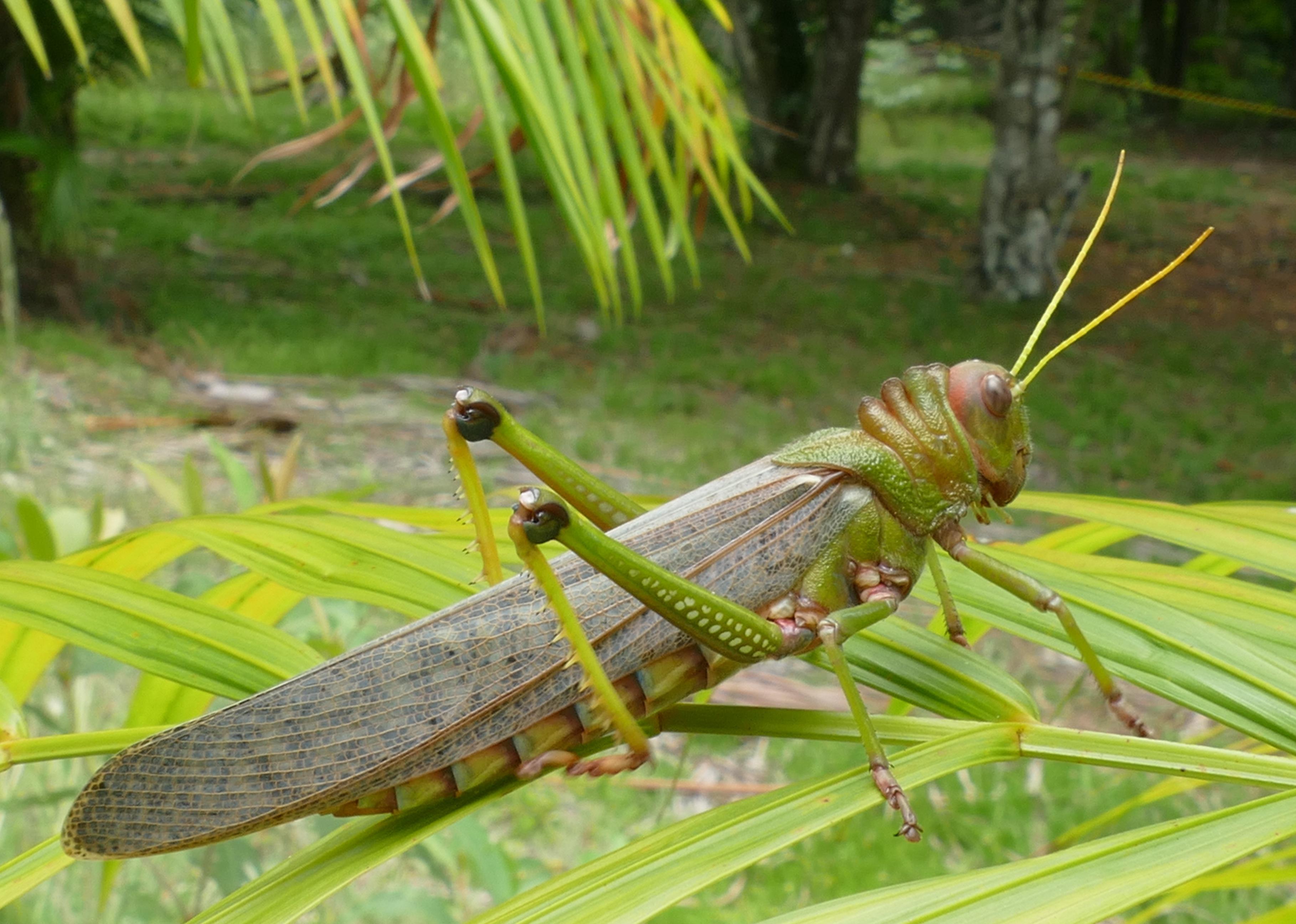VladimirSVK // Shutterstock About 300 million years ago, insects were scales larger than they are today: a shudder-inducing thought for anyone with entomophobia. Griffinflies, for instance, were massive dragonflies with wingspans reaching 28 inches. Insects were able to reach gargantuan sizes largely because the earth’s atmosphere was rich in oxygen in prehistoric times. Since then, as oxygen levels have decreased, insects’ air pipes have shrunk to adapt, and their bodies along with them. However, there are still many species around the world that have maintained impressive sizes. They are mostly found in oxygen-rich and scarcely populated areas, such as rainforests, that have allowed them to evolve without intrusion. Stacker compiled a list of 20 of the biggest insects in the world using various news, scientific, and other sources. However, defining “biggest” can be more complicated than it seems. For instance, the insect with the largest wingspan is Queen Alexandra’s birdwing, which can stretch to an entire foot in width. The longest or tallest insect would be Phyrganistria chinensis Zhao, a stick insect that can grow to 24.6 inches. The heaviest insect is the Giant w t , weighing up to 70 grams. By all units of measurement, beetles and moths tend to be found in larger sizes more often than other insects. Read on to find out just how big these impressive creatures can get and what that means for their diets, habitats, and defenses. You may also like: Rare animals featured in ‘Planet Earth,’ ‘Our Planet,’ and other nature documentaries Attacus atlas: Atlas moth Cocos.Bounty // Shutterstock – Size: 11-inch wingspan The Atlas moth is immediately recognizable for its large wingspan, which is covered in a distinct orange-and-white pattern. The largest of the moth species, it is found only in tropical forests in Asia. Chalcosoma atlas: Atlas beetle Mark Brandon // Shutterstock – Size: 5.1 inches long Atlas larvae are notably defensive, known to bite anything that touches them, and will fight among each other to death if food is scarce. With a life span of 12 months, the species is found mostly in Indonesia. Deinacrida heteracantha: Giant weta Viktor Hejna // Shutterstock – Size: 8 inches long, 2.5 ounces The w t derives its name from the indigenous Maori language, meaning “god of ugly things.” It is endemic to New Zealand. Because the nation was void of mammals for an extended period, the w t could evolve to a rodentlike size, though the introduction of actual rodents to the island has decimated much of its population. Dynastes hercules: Hercules beetle Tanawat Palee // Shutterstock – Size: 7 inches long The horn takes up almost half of the body length of male Hercules beetles, though females lack this appendage entirely. The species has been rumored to be able to carry up to 850 times its body mass, though this may be closer to a still-impressive 100 times its body mass in reality. Eacles imperialis imperialis: Imperial moth C. Freshour // Shutterstock – Size: 7 inch wingspan Most of the imperial moth’s life is dedicated to pupating, the stage in which it grows from larva to a mature adult. Because of this, it takes great care in choosing a place to settle and pupate, as it will be completely vulnerable to predators during that time. Once an adult, the moth doesn’t waste any time eating, instead focusing entirely on mating before death. You may also like: Fascinating facts about mating in the animal kingdom Enoplocerus armillatus: Giant longhorn beetle OlegD // Shutterstock – Size: 5.9 inches long This insect is spread far and wide across the South American continent, observed in Argentina, Colombia, French Guiana, Guyana, Venezuela, Trinidad and Tobago, Ecuador, Peru, Brazil, Bolivia, Paraguay, Panama, and Suriname. It is recognizable by its long black antennae and light brown wings. Gauromydas heros: Mydas fly Amanda Feltz // Shutterstock – Size: 2.8 inches long, 3.9-inch wingspan The Mydas fly’s greatest defense is its ability to perform convincingly. By imitating the sting of more threatening wasps and bees, it successfully wards off predators. It is also a natural predator itself, commonly eating other flies. Goliathus regius: Royal goliath beetle Nickolas warner // Shutterstock – Size: 4 inches long, 2.5 ounces Found across central Africa, this is the largest of all beetles, able to grow to nearly the size of a human hand. It typically nourishes itself on fruit, bark, and tree sap; it has also been raised in captivity on a diet of cat and dog food. Lethocerus grandis, Lethocerus maximus: Giant water bug Vinicius R. Souza // Shutterstock – Size: 4.7 inches long If you haven’t heard of a giant water bug, you might be thinking of one of its many nicknames, including “toe-biters, Indian toe-biters, electric-light bugs, alligator ticks, or alligator fleas.” These bugs call freshwater streams and ponds its home. They are also a popular snack in Southeast Asia. Lucanus cervus: European stag beetle Tomas Indrak // Shutterstock – Size: 3 inches long The European stag beetle has long front mandibles, which males use for both courting females and wrestling opponents. The species’ population is growing smaller, partly due to over-clearing in forests. You may also like: How communities are dealing with invasive species across the U.S. Macrodontia cervicornis: Sabertooth longhorn beetle topimages // Shutterstock – Size: 6.7 inches long This species has extra-long mandibles, thus earning the Macrodontia prefix (translating to “long tooth”). It spends most of its life as larvae, a stage extending for up to a decade. It is found in rainforests in Ecuador, Peru, Brazil, Colombia, and Bolivia. Macropanesthia rhinoceros: Giant burrowing cockroach skydie // Shutterstock – Size: 3 inches long These creatures are native to Australia and can weigh up to 1.2 ounces. Unlike other cockroaches, they do not have wings. They are natural composters, feeding on dead leaves. Megasoma actaeon: Actaeon beetle Kawin Jiaranaisakul // Shutterstock – Size: 5.3 inches long This beetle gets its namesake from Actaeon, a hero of Greek mythology who was transformed into a stag. It can be found across South America, including in French Guiana, Guyana, Panama, Peru, Bolivia, Brazil, Suriname, Colombia, Ecuador, and Venezuela. Megasoma elephas: Elephant beetle feathercollector // Shutterstock – Size: 5.1 inches long The elephant beetle can be found in the rainforests of central and South America. Males use their horns to battle others over mating partners and food supply–not by injuring, but by forcing others away. Ornithoptera alexandrae: Queen Alexandra’s birdwing
20 of the biggest insects in the world














